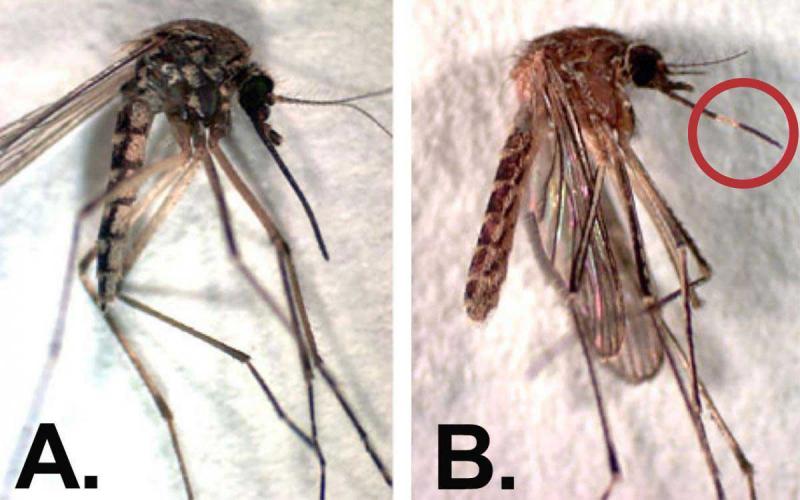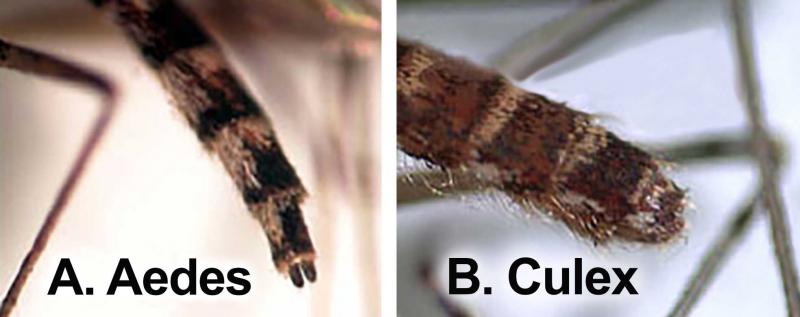
In some areas of South Dakota, recent precipitation has led to an increase in mosquito activity. Last year, mosquito populations were very high, and the 2020 numbers have been increasing rapidly. Although there are over 20 species of mosquitoes that can be found in South Dakota, there are really only two species that make up the majority. In South Dakota, a trapping network is used to monitor mosquito populations and determine when treatments are necessary for areas with high mosquito populations.
The historical and recent data from these traps indicate that the two most commonly observed species are Aedes vexans (Figure 1-A) and Culex tarsalis (Figure 1-B). Although both of these species are capable of vectoring West Nile Virus (WNV) to humans, C. tarsalis poses a greater threat. This is due to its habit of feeding on birds, which are the primary vertebrate hosts of WNV. A. vexans demonstrates a higher preference for humans and rarely feeds on bird hosts.

At first glance, the two mosquitos might seem similar in appearance, but there are key characteristics that can be used to distinguish them. A. vexans has a pointed tip of the abdomen (Figure 2-A) whereas C. tarsalis has a blunt-broad end of the abdomen (Figure 2-B). Furthermore, C. tarsalis has a white band present on the middle of the proboscis (Figure 1-B), whereas A. vexans does not.
To reduce the chances of contracting WNV, it is important to understand the behavior of the mosquito vectors. A. vexans is known to search for human hosts during both day and night, although the majority of its activity occurs at night. C. tarsalis is a nocturnal feeder (feeds at night) with the greatest risk of bites occurring between dusk and dawn. Therefore, the risk of WNV infection can be greatly reduced by limiting outdoor activities during this timeframe. If you are outside after dark, make sure to cover as much of your skin as possible by wearing long sleeves and pants. We also recommend using insect repellants that contain DEET or similar active ingredients to provide further protection. The U.S. Environmental Protection Agency provides a helpful tool for choosing a repellant that will provide the best protection based on the desired activities. For more information on avoiding mosquito bites visit our previous article, How to Avoid Being Dinner: Preventing Tick and Mosquito Bites.
Resources
- West Nile Virus Information and Data, South Dakota Mosquito Information Systems.
- West Nile Virus Prevention and Control, South Dakota Department of Health.


